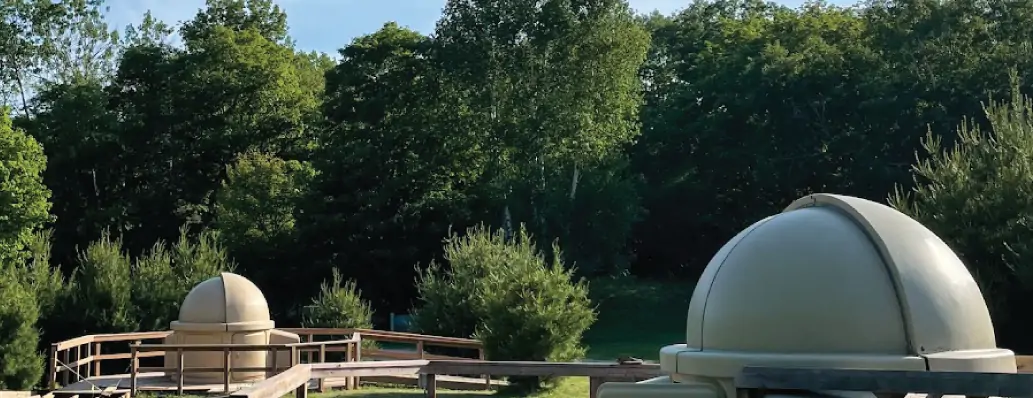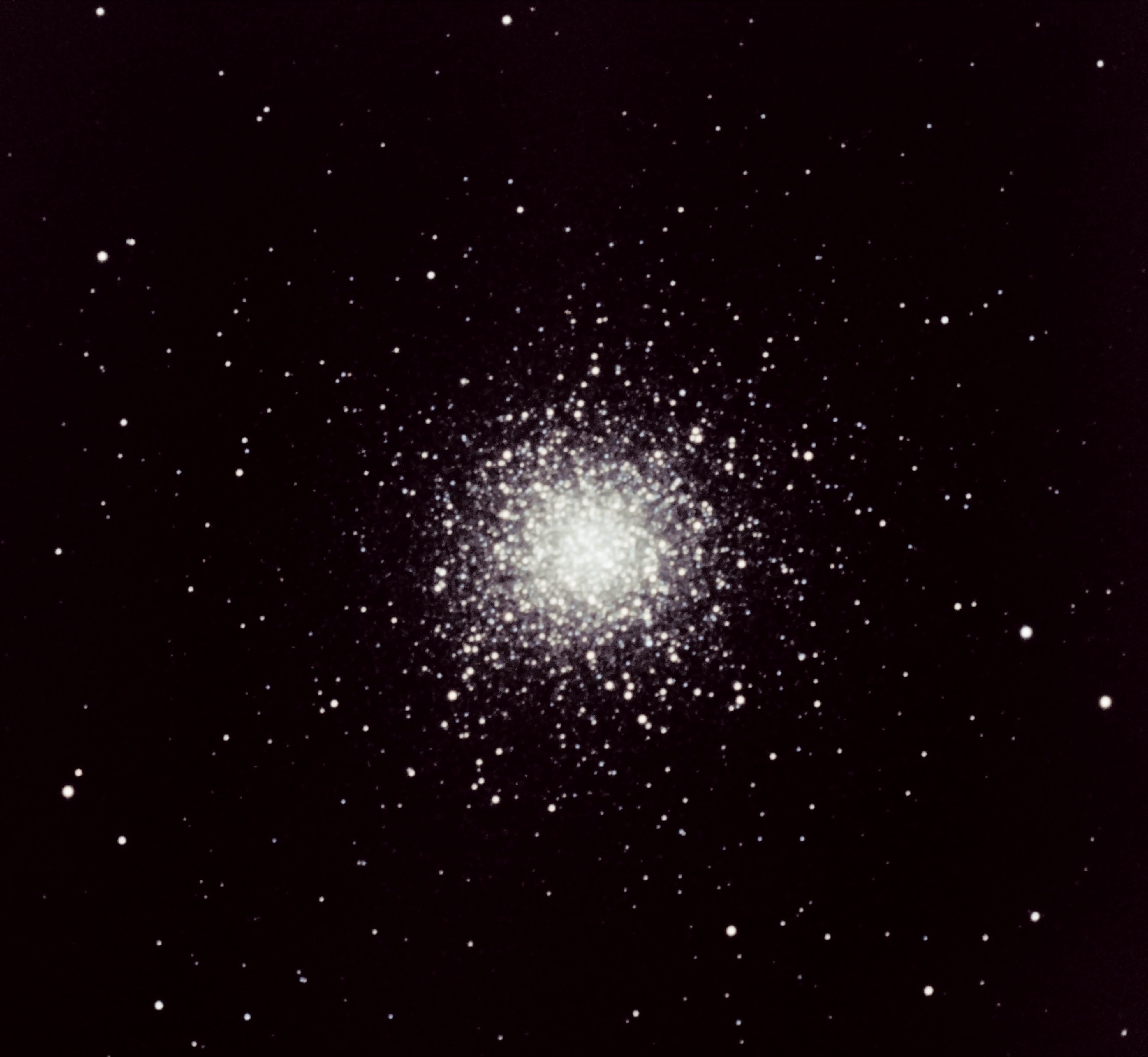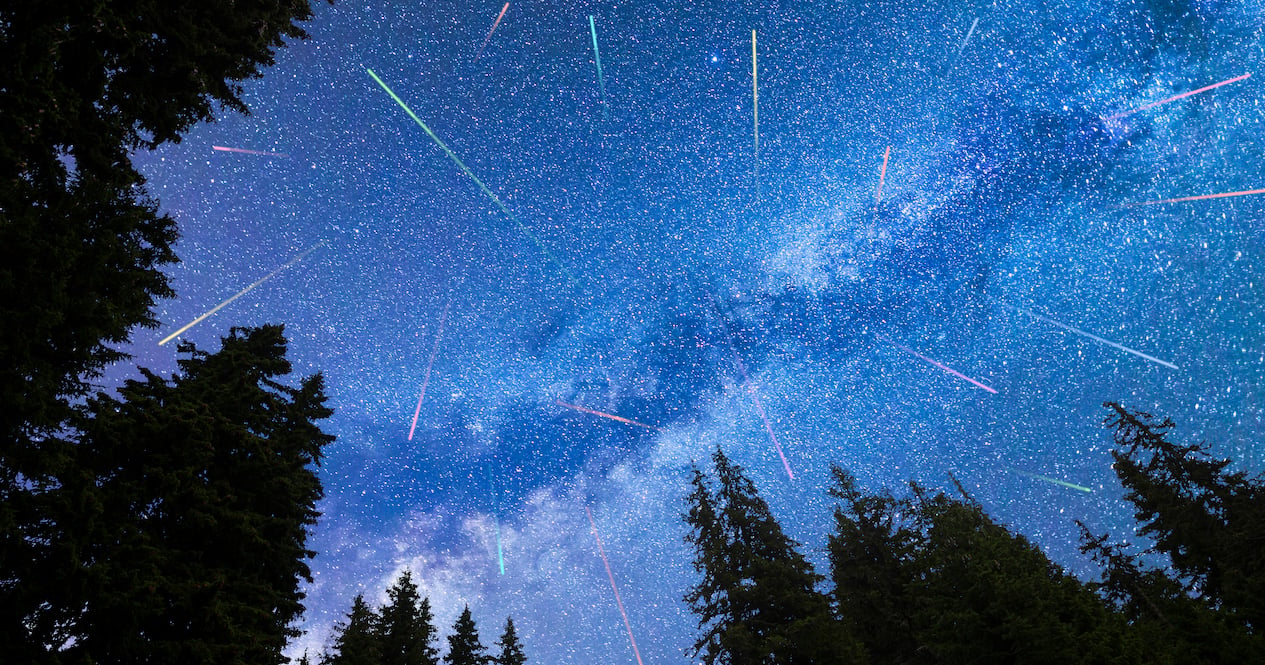Science
The Frontiers of Knowledge Award goes to Anne L’Huillier, Paul Corkum and Ferenc Krausz for enabling subatomic particles to be observed in motion over the shortest time scale captured by science
view more
Credit: BBVA Foundation
The BBVA Foundation Frontiers of Knowledge Award in Basic Sciences goes in this fifteenth edition to Anne L’Huillier (Lund University, Sweden), Paul Corkum (University of Ottawa, Canada) and Ferenc Krausz (Max Planck Institute of Quantum Optics, Germany), the three pioneers of “attosecond physics” or “attophysics” whose work has made it possible to observe subatomic processes unfolding over the shortest time scale captured by science.
The awardees, says the committee, “have shown how to observe and control the motion of electrons in atoms, molecules, and solids with ultrashort light pulses on time scales of about one hundred attoseconds. One attosecond is approximately the time for light to travel across an atom and is the natural scale for electronic motion in matter. This time scale was previously inaccessible to experimental studies due to the lack of light pulses with short enough duration.”
Thanks to attophysics, scientists can now directly observe natural processes that were once off-limits to the human eye. “It is a huge step to know that what we can imagine theoretically can now be tested experimentally. This interplay between experiment and theory is inspiring a lot of ideas,” remarked committee chairman Theodor W. Hänsch, Director of the Laser Spectroscopy Division at the Max Planck Institute of Quantum Optics (Germany) and winner of the Nobel Prize in Physics.
Attophysics, says laureate Paul Corkum, “is about making the fastest measurements that we as humans can make. And that, I think, is what places it at the forefront of knowledge.” An attosecond, he explains, “is incredibly short. So an attosecond is to a second as a second is to the age of the universe. Can you imagine something as short as that?” In figures, an attosecond is one billionth of a billionth of a second, that is, 0.000000000000000001 seconds.
“That’s the time scale for the movement of electrons across all the atoms matter is composed of, including our own bodies,” adds Fernando Martín, Professor of Physical Chemistry at the Universidad Autónoma de Madrid, Scientific Director of IMDEA Nanociencia and one of the nominators of the three awardees. “So to achieve real-time imaging of electron motion in matter, we needed a technology that would give us access to that time scale. And that is precisely what these researchers have achieved.”
An ultrafast “camera” to “film” electrons in motion
The tools developed by L’Huillier, Corkum, and Krausz act like a camera with a shutter time so dizzyingly ultrafast that it can capture the movement of a hydrogen atom electron that takes 150 attoseconds to circle the nucleus.
Prof. Martín elaborates on this example: “If you want to film how a car moves, you have to take snapshots at very close intervals, so the movement registers.”
“If you take photos with an exposure time of one minute, say, by the time you press the shutter the car has gone and all you have is a blurred image at best. In other words, to visualize an object, you need to take snapshots at intervals and with a duration far shorter than the time that object takes to move significantly. This is what the three laureates have done on the time scale of electron motion, thanks to light pulses generated with ultrafast lasers that emit for just a few attoseconds.”
Attophysics techniques not only mean that we can now capture the movement of electrons, they have also conjured the possibility of manipulating these subatomic particles. “Once you have gained the ability to visualize this movement in real time,” says Martín, “you can likely use the same light sources to manipulate it, eventually modifying its behavior and properties, with applications in multiple domains from biomedicine and electronics to the search for new clean energy sources.”
The committee’s citation ends with a similar reflection: “These groundbreaking contributions have opened exciting new frontiers in different areas, including atomic physics, photochemistry, and materials science.”
The findings that sowed the seeds of attophysics
In 1987, Anne L’Huillier made a discovery that laid the groundwork of the attophysics field. When working as a postdoctoral researcher at the Saclay Nuclear Research Centre near Paris, she became intrigued by the question of what would happen if atoms were subjected to short, intense laser pulses of infrared light. She expected to see fluorescent light, but was surprised to find that the atoms appeared to be emitting light waves at very high frequencies, that is, extremely high-energy X-rays.
L’Huillier had achieved the highest frequency ever recorded through the interaction of laser light pulses with matter. “It was truly fascinating; the first step toward generating an attosecond pulse. And I have never stopped working in the field, contributing to different aspects of the body of research.”
Retracing her steps, the scientist realized that the laser was acting on the atoms the way waves act on seaweed on a rock. Each time a wave comes in, the seaweed unfurls to its full extent, only to retract when the wave recedes. The seaweed, in other words, moves up and down in time with the waves. In similar fashion, the arrival of a laser pulse pulls away the electrons surrounding the atom, which then resume their initial position when the pulse stops. It was on the way back, it turned out, that the electrons emitted those high-frequency light waves.
The seaweed metaphor was originally devised by Paul Corkum on the basis of L’Huillier’s reconstruction. As well as coming up with an intuitive visualization of the phenomenon, he decided to study it from a theoretical standpoint, developing a model that mathematically described the interaction between laser and atoms. It was L’Huillier’s discovery and Corkum’s theoretical model that sowed the seeds of today’s attophysics.
The shortest light pulses in the history of science
While visiting Vienna in the 1990s, Corkum met Ferenc Krausz, then studying there as a young postdoc. “Corkum inspired me with his concepts like no one else,” Krausz recalls today. “What I took from them was that there might be a way to move forward into a time domain that was completely inaccessible beforehand, and render extremely fast processes observable.”
Corkum and Krausz were familiar with L’Huillier’s work and quickly agreed that it could hold the key to generating the shortest light flashes ever. They were aware that, in general, short light pulses were the vehicle to access and observe the universe of the small. Indeed with pulses just a little longer than those they were aiming for, scientists had already managed to glimpse the movement of atoms within molecules.
“The idea is the same as when you capture the motion of a Formula 1 car or a bullet. You take a series of snapshots and then reconstruct how the bullet actually hits the wall,” Krausz explains. These snapshots can then be reproduced in slow motion to see the movement in all its detail.
But they wanted to take this idea of ultrafast photography even further, and apply it to tracing the movement of electrons. These minuscule particles move up to a thousand times faster than atoms, so would require much shorter light pulses than were possible at the time. What was needed was to descend to the attosecond scale.
The light waves generated by L’Huillier seemed the ideal candidate for the task, as they oscillated at such high frequencies that they emitted light pulses of a few attoseconds duration.
The challenge didn’t end there, however. The pulses were short, certainly, but they followed each other in quick succession. And for them to perform in the style of an ultrafast camera, they would have to be isolated into individual light flashes and emitted one by one.
Krausz describes it thus: “Having a whole train of pulses is still something like having a camera that has a very high shutter speed. But it doesn’t open the shutter just once, it opens and closes the shutter all the time, which is, in many cases, not very helpful. You want to be able to open the shutter once and close it very quickly, to take just one snapshot. This is also true when we try to actually capture microscopic processes.”
The solution they came up with was simple but effective. They decided to go as far as possible in shortening the initial infrared pulse (the wave hitting the rock), so the electron (the seaweed) would rise and fall just once, and by doing so obtained a single light pulse lasting around one hundred attoseconds.
This experiment, published in 2001, marked what Krausz describes as “the birthday of experimental attophysics.” As well as opening the door to detailed observation of electron motion, it was able to corroborate a series of predictions formulated decades back by theoretical physics which had previously been inaccessible to testing in the lab.
One of these predictions is the so-called tunnel effect, a phenomenon predicted by quantum physics whereby an electron is able to pass through a barrier which, in theory, it does not have the energy to surmount. Although there was some evidence that the tunnel effect existed in nature, it had never yielded to real-time observation. Now, thanks to Corkum and Krausz’s technique, building on L’Huillier’s discovery, it could be seen on “film” for the first time.
In search of applications in fields like electronics and biomedicine
Now that attosecond physics has revealed its unquestionable potential, the awardees wish to use it to delve deeper into the mysteries of the matter all nature is made of, and to develop applications in fields such as electronics or biomedicine.
“This field of research is exploding in every direction,” says L’Huillier. “I have had the privilege to be there from the beginning, so I have seen the ideas grow and been able to follow the main steps in the process.” Asked about its future, she ventures that “it will split into different subfields,” as has occurred with other lines of research close to her own.
For this scientist, the next goal is to move towards the sphere of quantum information science. She is currently studying ways to probe more closely into processes like entanglement, one of the most surprising features of quantum mechanics whereby two separate particles, perhaps even kilometers apart, display a shared behavior that cannot be accounted for by classical physics. Arriving at as close as possible an understanding of this phenomenon could do much to hasten the advancement of quantum technologies, although L’Huillier’s motivation is not of an immediately practical nature: “This is a new aspect which I am very excited about, though I have no idea where it will go.”
Another concern is the highly specialized nature of the lasers used to generate attosecond pulses, and she is currently pondering ways to achieve the same effect using more widespread, commercially available lasers. “I think they are going to be very, very useful for more standard, maybe even industrial applications.”
Corkum, meantime, has been using attosecond pulses generated not by single atoms but by sets of atoms of semiconductors such as silicon. Semiconductors are at the heart of modern electronics, and the scientist believes that combining all previous knowledge of these materials with the new possibility of having them emit attosecond pulses is “a very powerful technology.”
Krausz too believes that attophysics can drive a new revolution in computing: “Electrons play an extremely important role in nanocircuits, they are responsible for switching the electric current on and off and thus processing information at ever higher speeds. If we want to speed up signal processing to build ever more powerful computers, again, we have to understand how electrons move in these tiny dimensions. And in doing so, we have the opportunity to advance electronic signal processing to its ultimate limit.”
He has also been exploring the potential of attosecond pulses in the detection of disease. If we remove all the cells from a blood sample, he explains, the fluid we are left with is the blood plasma or serum (depending on the treatment). The molecules it contains provide valuable cues to the donor’s health status, and the scientist is studying ways to use attosecond pulses to extract this information.
“Using incredibly sensitive measurements, we can analyze these molecules with great precision,” he explains. “And in our preliminary studies, we have been able to detect eight different types of cancers with an excellent efficiency. We have also detected one type of a very severe coronary disease, pre-diabetes, diabetes, and stroke.” These measurements, he believes, could prove game-changing in future for the early diagnosis of multiple conditions.
Results are now being subjected to testing in 10,000 individuals as part of a multi-year clinical trial, and Krausz’s hope is that the system may be operative within the next ten years.
Nominators
Anne L’Huillier, Paul Corkum, and Ferenc Krausz were put forward for the award by Stephen Leone, John R. Thomas Endowed Chair in Physical Chemistry at the University of California, Berkeley (United States); Fernando Martín, Professor of Physical Chemistry at the Universidad Autónoma de Madrid and Scientific Director of the Severo Ochoa project at IMDEA Nanociencia (Spain); and Pascal Salières, Head of the Attophysics Group at CEA Paris-Saclay (French Alternative Energies and Atomic Energy Commission), France.
Laureate bio notes
Anne L’Huillier (Paris, France, 1958), of French-Swedish nationality, obtained a double master’s degree in physics and mathematics in 1979, and went on to receive her PhD in Physical Sciences from the Université Pierre et Marie Curie in Paris in 1986. She completed her doctoral studies at what is now known as the Atomic Energy and Alternative Energies Commission (CEA), a public research organization where she held a permanent research position from 1986 to 1995, combining her work there with postdoc stays at Chalmers University of Technology (Gothenburg), the University of Southern California (Los Angeles) and the Lawrence Livermore National Laboratory (Livermore). In 1995 he joined the faculty at Lund University, where she has been Professor of Atomic Physics since 1997. Leader of eight EU-funded projects since 1993, she was a Member of the Nobel Committee for Physics from 2010 to 2015.
Paul Corkum (Saint John, New Brunswick, Canada, 1943) completed a PhD in Physics at Lehigh University (Bethlehem, Pennsylvania, United States) in 1972. In 1973 he joined the National Research Council of Canada (CNRC), where now, half a century on, he heads the Joint Attosecond Science Laboratory, a partnership between the CNRC and the University of Ottawa, where he is a Distinguished University Professor. He is also Co-Director of the Joint Centre for Extreme Photonics at the University of Ottawa and holds academic positions at Texas A&M University and the University of New Mexico. Author of over 360 articles in scientific journals with more than 47,000 citations, he serves or has served as an advisor to the U.S. National Research Council, the European Research Council and the Engineering and Physical Sciences Research Council (UK).
Ferenc Krausz (Mór, Hungary, 1962), of Hungarian-Austrian nationality, completed two degree courses simultaneously between 1981 and 1985, in electrical engineering at Budapest University of Technology and in theoretical physics at Eötvös Loránd University, also in the Hungarian capital. Shortly after, he moved to Austria and obtained his PhD in Laser Physics from Vienna University of Technology (1991), where he would go on to become a Full Professor of Electrical Engineering (1999-2004). He is currently Professor of Experimental Physics at Ludwig Maximilian University of Munich (since 2004) and one of five directors at the Max Planck Institute of Quantum Optics (since 2003). Krausz is also Scientific Director at the Center for Molecular Fingerprinting in Budapest, as well as heading the Centre for Advanced Laser Applications and the Laboratory for Extreme Photonics, both of them in Munich.
Basic Sciences committee and evaluation support panel
The committee in this category was chaired by Theodor Hänsch, Director of the Division of Laser Spectroscopy at the Max Planck Institute of Quantum Optics (Germany) and the 2005 Nobel Laureate in Physics, with Hongkun Park, Mark Hyman Jr. Professor of Chemistry and Professor of Physics at Harvard University (United States), acting as secretary. Remaining members were Emmanuel Candès, Barnum-Simons Professor of Mathematics and Statistics at Stanford University (United States), María José García Borge, Research Professor at the Institute of the Structure of Matter (IEM), CSIC (Spain), Nigel Hitchin, Emeritus Savilian Professor of Geometry in the Mathematical Institute at the University of Oxford (United Kingdom), Aitziber López Cortajarena, Ikerbasque Research Professor, Scientific Director and Biomolecular Nanotechnology Group Leader at CIC biomaGUNE, Center for Cooperative Research in Biomaterials (Spain), Martin Quack, Head of the Molecular Kinetics and Spectroscopy Group in the Laboratory of Physical Chemistry at ETH Zurich (Switzerland), and Sandip Tiwari, Charles N. Mellowes Professor in Engineering, Emeritus at Cornell University (United States) and Distinguished Visiting Professor at the Indian Institute of Technology, Kanpur (India).
The evaluation support panel charged with nominee pre-assessment was organized into three groups. The Physics Group was coordinated by Marisol Martín González, Scientific Researcher at the Institute of Micro and Nanotechnology (INM-CNM, CSIC) and formed by Alberto Casas González, Research Professor at the Institute for Theoretical Physics (IFT, CSIC-UAM); Alfonso Cebollada Navarro, Research Professor at the Institute of Micro and Nanotechnology (IMN-CNM, CSIC); Lourdes Fábrega Sánchez, Tenured Scientist at the Institute of Materials Science of Barcelona (ICMAB, CSIC); and Alejandro Luque Estepa, Tenured Scientist at the Institute of Astrophysics of Andalusia (IAA, CSIC). The Chemistry Group was coordinated by José M. Mato, General Director of CIC bioGUNE and CIC biomaGUNE, and formed by Miguel Ángel Bañares González, Research Professor in the Institute of Catalysis and Petrochemistry (ICP, CSIC); Ethel Eljarrat Essebag, Scientific Researcher at the Institute of Environmental Assessment and Water Research (IDAEA, CSIC); Francisco García Labiano, Deputy Coordinator of the MATERIA Global Area and Scientific Researcher at the Institute of Carbochemistry (ICB, CSIC); Jesús Jiménez-Barbero, Scientific Director of CIC bioGUNE and Ikerbasque Research Professor in the Chemical Glycobiology Lab; Gonzalo Jiménez-Osés, Principal Investigator in the Computational Chemistry Lab at CIC bioGUNE; Luis Liz-Marzán, Principal Investigator in the Bionanoplasmonics Lab at CIC biomaGUNE; Aitziber López Cortajarena, Ikerbasque Research Professor, Scientific Director and Principal Investigator in the Biomolecular Nanotechnology Lab at CIC biomaGUNE; and María Luz Sanz Murias, Scientific Researcher at the Institute of General Organic Chemistry (IQOG, CSIC). The Mathematics Group was coordinated by José María Martell Berrocal, CSIC Vice-President for Scientific and Technical Research, and formed by María Jesús Carro Rosell, Professor of Mathematical Analysis at the Universidad Complutense de Madrid; Alberto Enciso Carrasco, Research Professor at the Institute of Mathematical Sciences (ICMAT, CSIC); Elisenda Feliú, Associate Professor in the Department of Mathematical Sciences at the University of Copenhagen (Denmark); and Francisco Martín Serrano, Professor in the Department of Geometry and Topology at the University of Granada.
About the BBVA Foundation Frontiers of Knowledge Awards
The BBVA Foundation centers its activity on the promotion of world-class scientific research and cultural creation, and the recognition of talent.
The BBVA Foundation Frontiers of Knowledge Awards, funded with 400,000 euros in each of their eight categories, recognize and reward contributions of singular impact in physics and chemistry, mathematics, biology and biomedicine, technology, environmental sciences (climate change, ecology and conservation biology), economics, social sciences, the humanities and music, privileging those that significantly enlarge the stock of knowledge in a discipline, open up new fields, or build bridges between disciplinary areas. The goal of the awards, established in 2008, is to celebrate and promote the value of knowledge as a public good without frontiers, the best instrument to take on the great global challenges of our time and expand the worldviews of individuals for the benefit of all humanity. Their eight categories address the knowledge map of the 21st century.
The BBVA Foundation has been aided in the evaluation of nominees for the Frontiers Award in Basic Sciences by the Spanish National Research Council (CSIC), the country’s premier public research organization. CSIC has a preferential role in the appointment of members to the evaluation support panels made up of leading experts in the corresponding knowledge area, who are charged with undertaking an initial assessment of the candidates proposed by numerous institutions across the world, and drawing up a reasoned shortlist for the consideration of the award committees. CSIC is also responsible for designating each committee’s chair and participates in the selection of remaining members, thus helping to ensure objectivity in the recognition of scientific excellence.
The BBVA Foundation Frontiers of Knowledge Award in Basic Sciences goes in this fifteenth edition to Anne L’Huillier (Lund University, Sweden), Paul Corkum (University of Ottawa, Canada) and Ferenc Krausz (Max Planck Institute of Quantum Optics, Germany), the three pioneers of “attosecond physics” or “attophysics” whose work has made it possible to observe subatomic processes unfolding over the shortest time scale captured by science.

Science
Asteroid Apophis will visit Earth in 2029, and this European satellite will be along for the ride

The European Space Agency is fast-tracking a new mission called Ramses, which will fly to near-Earth asteroid 99942 Apophis and join the space rock in 2029 when it comes very close to our planet — closer even than the region where geosynchronous satellites sit.
Ramses is short for Rapid Apophis Mission for Space Safety and, as its name suggests, is the next phase in humanity’s efforts to learn more about near-Earth asteroids (NEOs) and how we might deflect them should one ever be discovered on a collision course with planet Earth.
In order to launch in time to rendezvous with Apophis in February 2029, scientists at the European Space Agency have been given permission to start planning Ramses even before the multinational space agency officially adopts the mission. The sanctioning and appropriation of funding for the Ramses mission will hopefully take place at ESA’s Ministerial Council meeting (involving representatives from each of ESA’s member states) in November of 2025. To arrive at Apophis in February 2029, launch would have to take place in April 2028, the agency says.
This is a big deal because large asteroids don’t come this close to Earth very often. It is thus scientifically precious that, on April 13, 2029, Apophis will pass within 19,794 miles (31,860 kilometers) of Earth. For comparison, geosynchronous orbit is 22,236 miles (35,786 km) above Earth’s surface. Such close fly-bys by asteroids hundreds of meters across (Apophis is about 1,230 feet, or 375 meters, across) only occur on average once every 5,000 to 10,000 years. Miss this one, and we’ve got a long time to wait for the next.
When Apophis was discovered in 2004, it was for a short time the most dangerous asteroid known, being classified as having the potential to impact with Earth possibly in 2029, 2036, or 2068. Should an asteroid of its size strike Earth, it could gouge out a crater several kilometers across and devastate a country with shock waves, flash heating and earth tremors. If it crashed down in the ocean, it could send a towering tsunami to devastate coastlines in multiple countries.
Over time, as our knowledge of Apophis’ orbit became more refined, however, the risk of impact greatly went down. Radar observations of the asteroid in March of 2021 reduced the uncertainty in Apophis’ orbit from hundreds of kilometers to just a few kilometers, finally removing any lingering worries about an impact — at least for the next 100 years. (Beyond 100 years, asteroid orbits can become too unpredictable to plot with any accuracy, but there’s currently no suggestion that an impact will occur after 100 years.) So, Earth is expected to be perfectly safe in 2029 when Apophis comes through. Still, scientists want to see how Apophis responds by coming so close to Earth and entering our planet’s gravitational field.
“There is still so much we have yet to learn about asteroids but, until now, we have had to travel deep into the solar system to study them and perform experiments ourselves to interact with their surface,” said Patrick Michel, who is the Director of Research at CNRS at Observatoire de la Côte d’Azur in Nice, France, in a statement. “Nature is bringing one to us and conducting the experiment itself. All we need to do is watch as Apophis is stretched and squeezed by strong tidal forces that may trigger landslides and other disturbances and reveal new material from beneath the surface.”
By arriving at Apophis before the asteroid’s close encounter with Earth, and sticking with it throughout the flyby and beyond, Ramses will be in prime position to conduct before-and-after surveys to see how Apophis reacts to Earth. By looking for disturbances Earth’s gravitational tidal forces trigger on the asteroid’s surface, Ramses will be able to learn about Apophis’ internal structure, density, porosity and composition, all of which are characteristics that we would need to first understand before considering how best to deflect a similar asteroid were one ever found to be on a collision course with our world.
Besides assisting in protecting Earth, learning about Apophis will give scientists further insights into how similar asteroids formed in the early solar system, and, in the process, how planets (including Earth) formed out of the same material.
One way we already know Earth will affect Apophis is by changing its orbit. Currently, Apophis is categorized as an Aten-type asteroid, which is what we call the class of near-Earth objects that have a shorter orbit around the sun than Earth does. Apophis currently gets as far as 0.92 astronomical units (137.6 million km, or 85.5 million miles) from the sun. However, our planet will give Apophis a gravitational nudge that will enlarge its orbit to 1.1 astronomical units (164.6 million km, or 102 million miles), such that its orbital period becomes longer than Earth’s.
It will then be classed as an Apollo-type asteroid.
Ramses won’t be alone in tracking Apophis. NASA has repurposed their OSIRIS-REx mission, which returned a sample from another near-Earth asteroid, 101955 Bennu, in 2023. However, the spacecraft, renamed OSIRIS-APEX (Apophis Explorer), won’t arrive at the asteroid until April 23, 2029, ten days after the close encounter with Earth. OSIRIS-APEX will initially perform a flyby of Apophis at a distance of about 2,500 miles (4,000 km) from the object, then return in June that year to settle into orbit around Apophis for an 18-month mission.
Related Stories:
Furthermore, the European Space Agency still plans on launching its Hera spacecraft in October 2024 to follow-up on the DART mission to the double asteroid Didymos and Dimorphos. DART impacted the latter in a test of kinetic impactor capabilities for potentially changing a hazardous asteroid’s orbit around our planet. Hera will survey the binary asteroid system and observe the crater made by DART’s sacrifice to gain a better understanding of Dimorphos’ structure and composition post-impact, so that we can place the results in context.
The more near-Earth asteroids like Dimorphos and Apophis that we study, the greater that context becomes. Perhaps, one day, the understanding that we have gained from these missions will indeed save our planet.

Science
McMaster Astronomy grad student takes a star turn in Killarney Provincial Park

Astronomy PhD candidate Veronika Dornan served as the astronomer in residence at Killarney Provincial Park. She’ll be back again in October when the nights are longer (and bug free). Dornan has delivered dozens of talks and shows at the W.J. McCallion Planetarium and in the community. (Photos by Veronika Dornan)
BY Jay Robb, Faculty of Science
July 16, 2024
Veronika Dornan followed up the April 8 total solar eclipse with another awe-inspiring celestial moment.
This time, the astronomy PhD candidate wasn’t cheering alongside thousands of people at McMaster — she was alone with a telescope in the heart of Killarney Provincial Park just before midnight.
Dornan had the park’s telescope pointed at one of the hundreds of globular star clusters that make up the Milky Way. She was seeing light from thousands of stars that had travelled more than 10,000 years to reach the Earth.
This time there was no cheering: All she could say was a quiet “wow”.
Dornan drove five hours north to spend a week at Killarney Park as the astronomer in residence. part of an outreach program run by the park in collaboration with the Allan I. Carswell Observatory at York University.
Dornan applied because the program combines her two favourite things — astronomy and the great outdoors. While she’s a lifelong camper, hiker and canoeist, it was her first trip to Killarney.
Bruce Waters, who’s taught astronomy to the public since 1981 and co-founded Stars over Killarney, warned Dornan that once she went to the park, she wouldn’t want to go anywhere else.
The park lived up to the hype. Everywhere she looked was like a painting, something “a certain Group of Seven had already thought many times over.”
She spent her days hiking the Granite Ridge, Crack and Chikanishing trails and kayaking on George Lake. At night, she went stargazing with campers — or at least tried to. The weather didn’t cooperate most evenings — instead of looking through the park’s two domed telescopes, Dornan improvised and gave talks in the amphitheatre beneath cloudy skies.
Dornan has delivered dozens of talks over the years in McMaster’s W.J. McCallion Planetarium and out in the community, but “it’s a bit more complicated when you’re talking about the stars while at the same time fighting for your life against swarms of bugs.”
When the campers called it a night and the clouds parted, Dornan spent hours observing the stars. “I seriously messed up my sleep schedule.”
She also gave astrophotography a try during her residency, capturing images of the Ring Nebula and the Great Hercules Cluster.

“People assume astronomers take their own photos. I needed quite a lot of guidance for how to take the images. It took a while to fiddle with the image properties, but I got my images.”
Dornan’s been invited back for another week-long residency in bug-free October, when longer nights offer more opportunities to explore and photograph the final frontier.
She’s aiming to defend her PhD thesis early next summer, then build a career that continues to combine research and outreach.
“Research leads to new discoveries which gives you exciting things to talk about. And if you’re not connecting with the public then what’s the point of doing research?”

Science
Where in Vancouver to see the ‘best meteor shower of the year’

Eyes to the skies, Vancouver, because between now and September 1st, stargazers can witness the ‘best meteor shower of the year’ according to NASA.
Known for its “long wakes of light and colour,” the Perseid Meteor Shower will peak on August 12th, 2024 – so consider this list a great place to start if you’re in search of a prime stargazing spots!
Grab your lawn chairs and blankets, and seek as little light pollution as possible. Here are some ideal stargazing spots to check out in and around Vancouver this summer.
Recent Posts:
This island with clear waters has one of the prettiest towns in BC
10 beautiful lake towns to visit in BC this summer
Wreck Beach
If you’re willing to brave the stairs and the regulars, it doesn’t get much better than Wreck Beach for watching the skies – for both sunsets and stargazing. The west-facing views practically eliminate immediate distractions from the city lights.
Spanish Banks Park
Spanish Banks is the perfect mixture of convenience and quality. Its location offers unobstructed views of the skies above, and it’s far enough away from downtown to mitigate some of the light pollution.
Burnaby Mountain Park
If it’s good enough for a university observatory, it’s good enough for us. Pretty much anywhere on Burnaby Mountain will offer tremendous viewpoints, but the higher you get the better (safely).
Porteau Cove
A short drive from Vancouver gets you incredible views of the Howe Sound from directly on the water. And naturally, its distance from any nearby community makes it a prime spot for stargazing.
Cypress Mountain
In addition to having one of the best viewpoints in Vancouver period, Cypress Mountain (and the road up to it) is also a great place to watch the sky. For a double-whammy, we say that you come around sunset, then hang out while the sky gets dark. Sure, it might take a few hours, but the view is worth it.
So there you have it, stargazers! Get ready to witness a dazzling show this summer.

-

 Business13 hours ago
Business13 hours agoQuestions Hiring Managers Ask Themselves When Assessing Candidates
-

 Sports21 hours ago
Sports21 hours agoOilers sign Leon Draisaitl to an 8-year extension worth $112 million
-

 News13 hours ago
News13 hours agoNew Jersey floats $400 million in tax breaks to lure Philadelphia 76ers
-
Health11 hours ago
Prosperity Message From Jake – VIP
-

 News21 hours ago
News21 hours agoEdmonton Oilers sign centre Leon Draisaitl to eight-year extension
-

 News14 hours ago
News14 hours agoFormer aide to 2 New York governors is charged with being an agent of the Chinese government
-

 News13 hours ago
News13 hours agoMusk’s Starlink backtracks and says it will comply with judge’s order to block X in Brazil
-

 News9 hours ago
News9 hours agoChukwu on target as Canadian women thump Fiji 9-0 at FIFA U-20 World Cup in Colombia



















